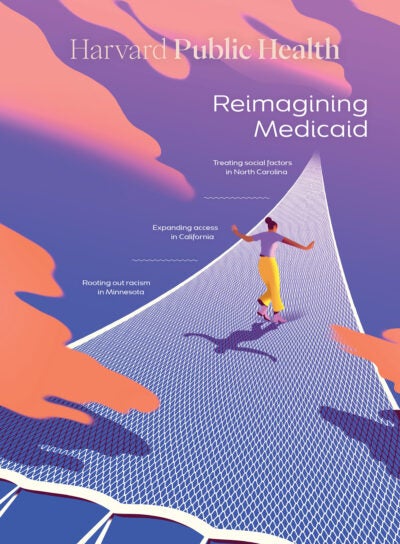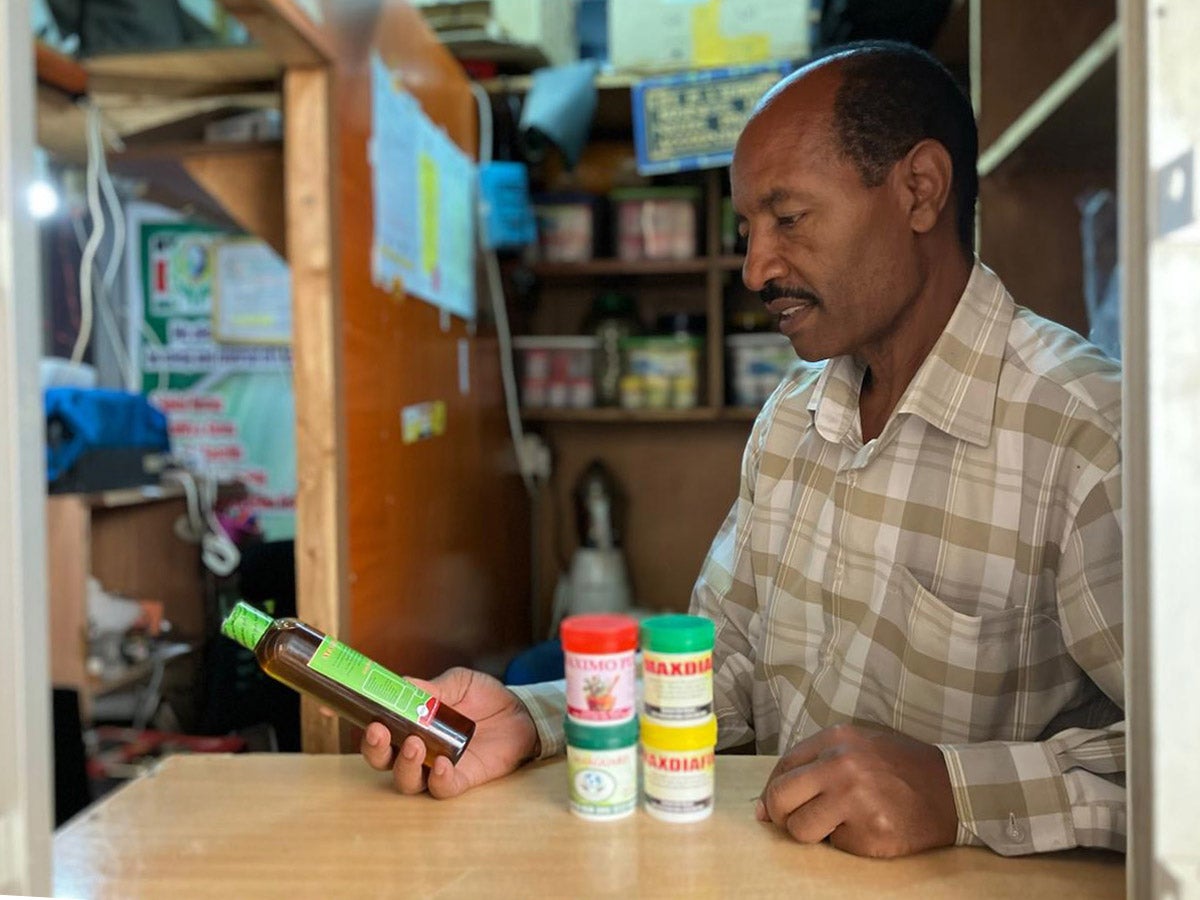
Feature
The path to universal access
After more than 15 years of debate, South Africa is set to overhaul its public health system. As early as next year, a new law would refashion private health services and advance universal health care.
The move is equal parts principled and pragmatic. South Africa’s constitution, adopted in 1996 after the end of apartheid, promises everyone the right to access health care services. The African National Congress (ANC)—the party of Nelson Mandela and South Africa’s dominant political force since apartheid—believes that right should mean equal access to quality services. But South Africa today is mired in a deeply inequitable two-tiered health system. An underregulated private sector serves a minority of the country but employs nearly 80 percent of its doctors and specialists. The rest of South Africa—roughly 50 million people—relies on an overstretched, understaffed public system.
Sign up for Harvard Public Health
Delivered to your inbox weekly.
Post-apartheid South Africa “has been wrestling with the idea of universal health coverage since its birth,” says Russell Rensburg, the director of the Rural Health Advocacy Project. But, he adds, “there are a lot of different paths” to achieving it.
The model in South Africa’s current National Health Insurance (NHI) bill, championed by the ANC and passed by the National Assembly in June, envisions a single-payer system implemented in phases over several years. It may in fact take decades, but ultimately the system would have the money and infrastructure to negotiate healthcare prices and purchase almost all basic health care services. In almost all cases, patients would pick their closest point of care, whether it was a public or private facility, without paying out of pocket.
The architects of the new single-payer model looked at Canada’s system of provincial and territorial plans, which South Africa’s proposal most closely resembles, and at Ghana’s efforts to establish national health insurance in 2003. But the makeup of South Africa’s economy and population, as well as its struggles with the legacy of apartheid, make its efforts unique on the global stage.
Opponents of the legislation warn about major unresolved issues—including what services national insurance would cover. Supporters of the bill see a long-awaited move from talk to action that champions collective rights over the needs of the country’s most privileged. And in the ongoing debate over the bill, they see opportunities to build national consensus on the details of universal coverage.
Everyone agrees about one thing: South Africa’s existing health system is near its breaking point. A 2020 study showed that the poorer a patient, the less likely they are to access private health care. Poorer patients are more likely to live farther from a health facility and to report an unmet need.
“[The] data is telling a story that is visible,” says Tanja Gordon, a doctoral student in health economics at the University of Cape Town and the University of Bristol and the lead author of the paper. She described long lines each morning in front of public health centers as patients wait for treatment, and people who grow sicker while waiting for a diagnosis. These access problems are known to have compounding effects: Poor health also affects the ability of the sick person to get education or find work.
One reason for poor outcomes is that the public system is underfunded relative to the need it serves. South Africa currently spends slightly more than eight percent of its gross domestic product on health care. That spending is split almost equally between the public and private sector, even though the private sector serves less than 30 percent of the population. The private sector is “growing out of all proportion cost-wise,” says Nicholas Crisp, deputy director general of NHI for South Africa’s National Department of Health.
Roughly 50 million South Africans rely on an overstretched, understaffed public health system.
The NHI bill would loosen the grip of South Africa’s powerful private medical plans, which charge monthly premiums in exchange for standardized coverage in the country’s private health facilities. Under the bill, private plans could cover only services the NHI does not pay for.
Some experts fear that these changes might exacerbate the country’s health care challenges. “Doctors will be exiting the market, wanting to move abroad,” says Tanya Muller of the Alliance of South African Independent Practitioners Associations. “We are going to see a decline of health services.”
The country’s recent history makes corruption a concern for critics—one shared even by supporters of the bill, despite its safeguards. Still other critics denounce the bill as heavy with politics and light on policy specifics. “The problem is that this bill, it’s politically driven, and we’re staring down the barrel of next year’s general election,” says Larisse Prinsen, a senior law lecturer at South Africa’s University of the Free State. She worries that too much remains unresolved in the haste to show some progress toward delivering universal health coverage—including what it will cost and where the government will find the money to pay for it.
Crisp says South Africa’s NHI will use existing government allocations for health services as well as contributions from taxpayers who pass certain income thresholds. It will save money by phasing out existing insurance subsidies, and it will redirect that funding toward the NHI. A payroll tax is also being considered.
The costs, he says, are “the least of our worries. You include only those benefits that you’ve got the resources to pay for.” The NHI envisions a phased shift, and as implementation gets underway, Crisp says more savings will be found by merging public and private systems and eliminating duplicative services. There may also be unused capacity in the private market that the system can immediately take advantage of, even as officials work to shore up services in struggling public sector facilities.
Rensburg, of the Rural Health Advocacy Project, hopes the critics’ questions can jumpstart a national discussion about what the system should provide. The South African public health system is decentralized, and “care is not standardized across the nine provinces,” he says. There is an opportunity to pull all communities—including traditionally overlooked and underserved rural communities—into a conversation about setting health care priorities.
“If people sit down and focus on the legislation rather than their fears, we can build a path towards greater solidarity,” he says.
Source Image: filo / iStock
Andrew Green is a Berlin-based journalist who writes about global health.



